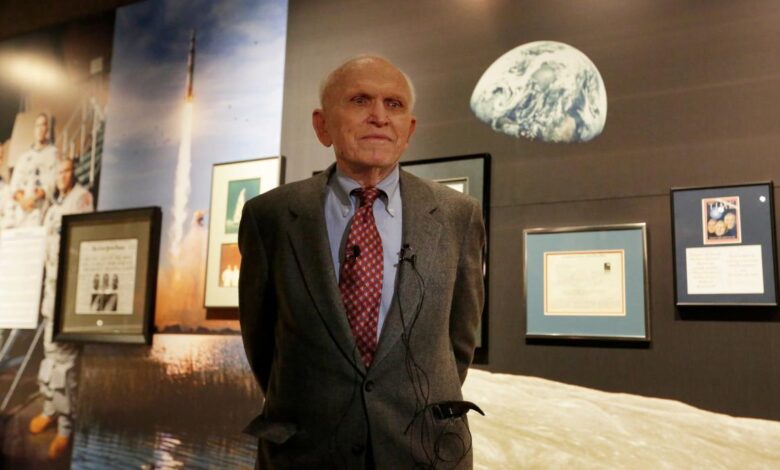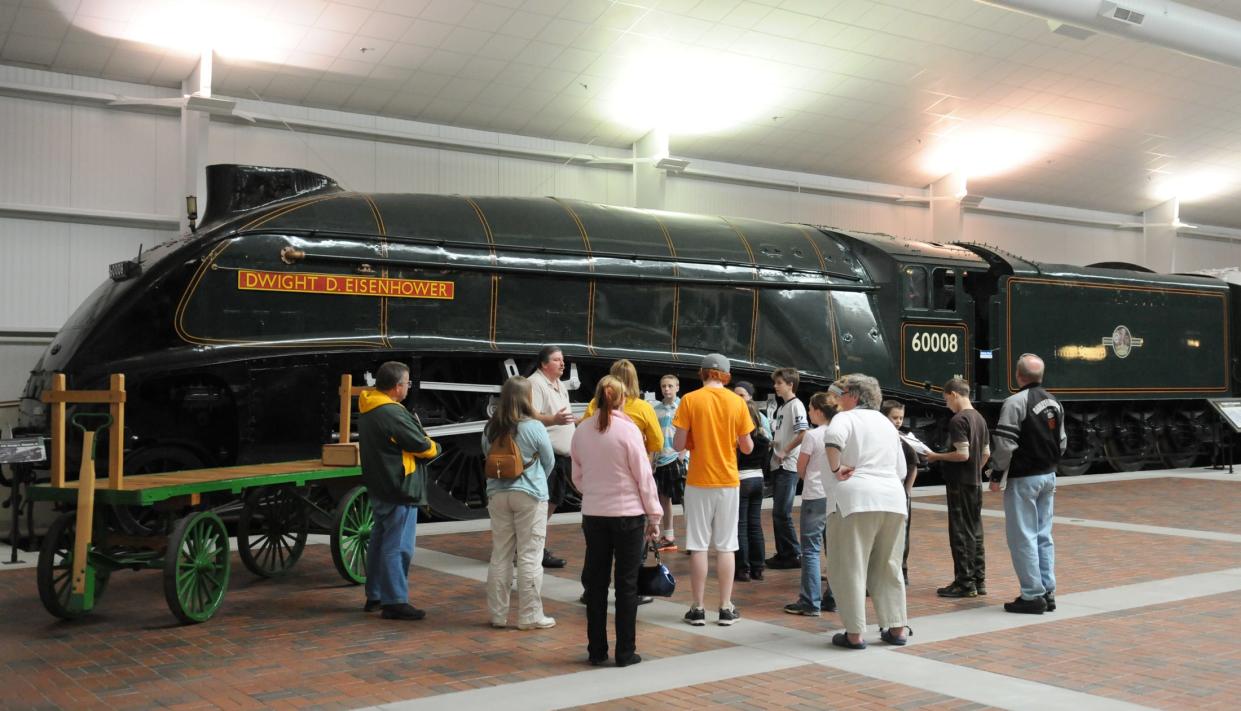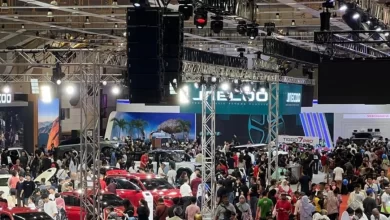Planes, trains and automobiles. Motorcycles, too. 4 Wisconsin transportation museums to visit this summer

Here in Wisconsin, we’ve got aviation buffs, train nuts, gearheads and those who buy into motorcycle mystique.
And we’ve got the museums to prove it. These four destinations are likely only a short day trip from where you’re reading this now. But they just might inspire you to hit the road, skies or rails and explore the world. Or even beyond.
These places and their exhibits also take us into the past to help us understand just how we got to where we are now.
For those seeking the unique, these museums have it. Where else are you going to tour a train car once used by Gen. Dwight D. Eisenhower during World War II or look at motorcycle that got swept from Japan by a storm, only to wash up on a Canadian beach? Where else can you find items from the personal collection of an astronaut who was one of the first two people ever to spend two weeks in space?
The EAA Aviation Museum soars into the early days of flight
Visitors can take a deep dive into the history of flight at the EAA Aviation Museum, located at 3000 Poberezny Road, Oshkosh. Exhibits include a tribute to the Wright Brothers featuring an accurate replica of the Wright Flyer, an innovations gallery that marks steps in aviation achievement and Pioneer Airport, a living-history recreation of what airports were like in the earliest days of air travel.
Space nuts will want to check out The Borman Collection, an exhibit that features more than 1,000 items donated by Col Frank Borman, a longtime supporter of EAA. Borman was a NASA astronaut who along with Jim Lovell flew a two-week mission orbiting the Earth to test the effects a long-term space flight. The flight was a record at the time.
The museum is open every day from 10 a.m. to 5 p.m. and costs $15 for adults, $13 for seniors 62 and older, $13 for veterans, active duty military members and their spouses, $12 for youth ages 6 through 18 and is free for children ages 5 and younger. Website: EAA.org/museum


Steam back in time at the National Railroad Museum
The National Railroad Museum, 2285 S. Broadway, Green Bay, became the only congressionally-designated railroad museum in the United States in 1956, after a group of local business leaders banded together to preserve a steam locomotive and other railway vehicles. The museum’s collection includes a massive Union Pacific locomotive named “Big Boy” weighing in at 1.1 million pounds, a multi-media exhibit devoted to Pullman porters their and role in fighting for Civil Rights and a Children’s Discovery Depot, a hands-on area that shuttles youngsters into the world of railroading.
Not to be missed is the Dwight D. Eisenhower, a sleek British A4 Class locomotive — the only one in the United States — named for the famous American general after World War II. Along with the engine, visitors can tour two London and North Eastern Railroad cars that were used by Eisenhower during the war.
Museum hours through December are 9 a.m. to 5 p.m. on Mondays and Wednesdays through Saturdays, 9 a.m. to 8 p.m. on Tuesdays and 11 a.m. to 5 p.m. on Sundays. Entry is $13 for adults and teenagers, $11 for seniors ages 62 and older, $11 for college students, $9 for children ages 2 through 12 and free for children younger than 2. Website: nationalrrmuseum.org


Take a drive down memory lane at the Wisconsin Automotive Museum
The state’s largest car museum is the Wisconsin Automotive Museum at 147 N. Rural St., Hartford. It opened in 1986, and has about 120 to 125 vintage cars on display. Gearheads also will like the Wisconsin roads exhibit, a collection of antique gas pumps, license places and other automobilia. The museum features an exhibit devoted to the Nash Club of America and offers racing fans the Short Track Hall of Fame.
Buffs of Wisconsin carmakers won’t want to miss the Kissel collection. Kissel made cars in a factory that once stood about six blocks from the museum. The manufacturer produced high-end cars in Hartford from 1906 to 1931, according the Wisconsin Automotive Museum’s website. The most famous model was known as the “Gold Bug” and was owned by celebrities such as Amelia Earhart, Douglas Fairbanks and Greta Garbo. The company made about 27,000 automobiles, and about 150 are known to exist today. There are 25 or so of the cars exhibited at the museum.
Museum hours are from 10 a.m. to 5 p.m. Wednesdays through Saturdays. Entry costs $12 for adults (ages 17 through 61), $10 for seniors aged 62 and older, $6 for children ages 6 through 16 and is free for children ages 5 and younger. Website: wisconsinautomuseum.com
The Harley-Davidson Museum rumbles with history and culture
The Harley-Davidson Museum on 400 West Canal Street, Milwaukee, is more than a museum, just like a hog is more than bike. Located on a “20-acre, park-like campus,” the facility devoted to the motorcycle manufacturer’s history and mystique features two retail stores and two floors of exhibits, according to its website. Exhibits include the Engine Room, which traces the evolution of Harley’s engines from the beginning to now, an area devoted to clubs and competition and a history of the challenges and victories the company has faced and achieved through the years.
Don’t miss the most unlikely artifact at the museum: A battered Harley that washed up on a beach in British Columbia, Canada. The bike drifted 4,000 miles across the Pacific Ocean, according to the museum’s website, after being swept away in a storage container during the tsunami that deluged Japan in March of 2011. It’s a 2004 Harley-Davidson Night Train, and the museum displays the bike as a memorial to the 15,000 people who died in the natural disaster.
The museum is open from 10 a.m. to 5 p.m. daily. Tickets cost $22 for adults ages 18 through 64, $18 for seniors 65 and older and military members, $16 for students 18 and older, $8 for children ages 5 through 17 and are free for children younger than 5. Website: harley-davidson.com/us/en/museum.html
This article originally appeared on Green Bay Press-Gazette: Wisconsin transportation museums: Harley-Davidson, EAA Aviation, more



